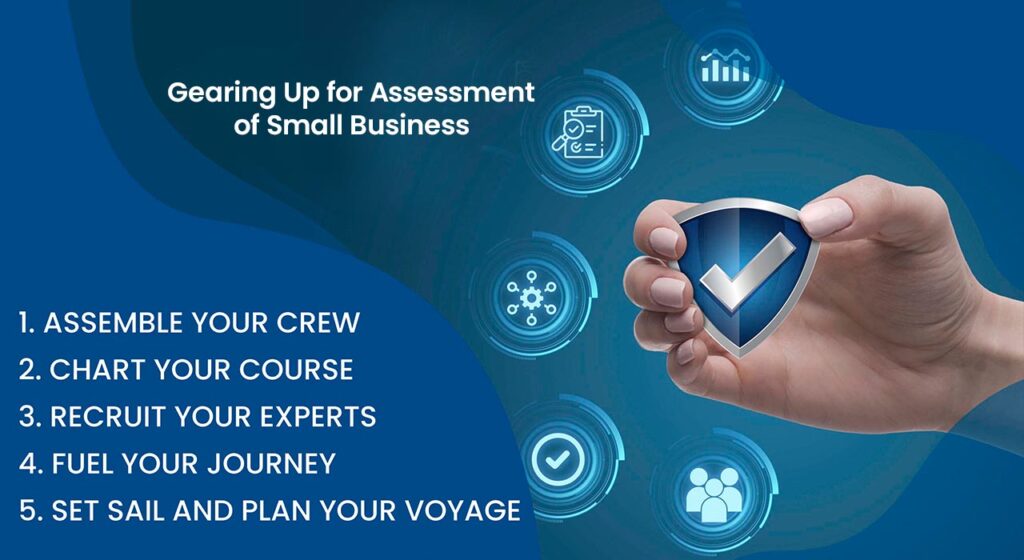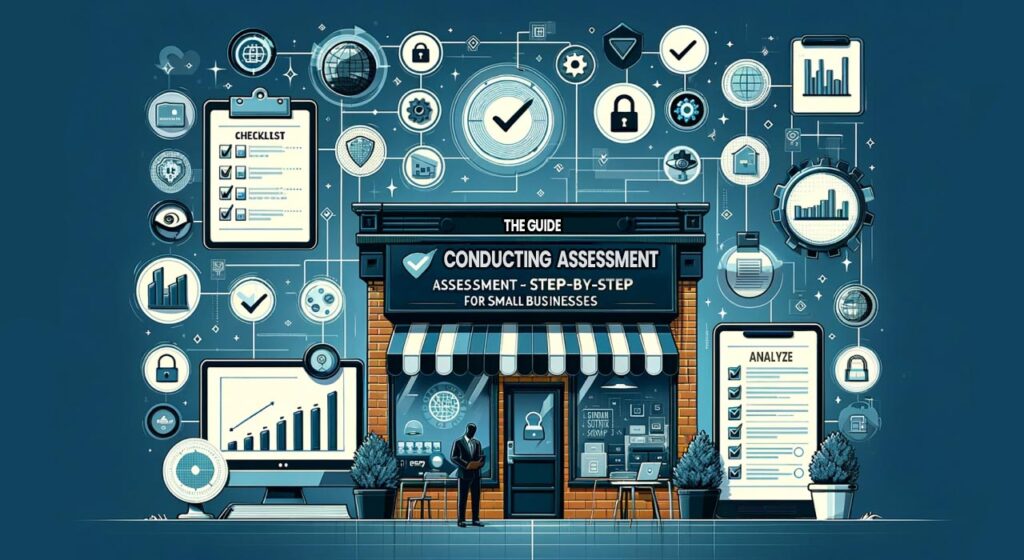![{"type":"elementor","siteurl":"https://blog.cybernod.com/wp-json/","elements":[{"id":"b8aa665","elType":"widget","isInner":false,"isLocked":false,"settings":{"image":{"url":"https://blog.cybernod.com/wp-content/plugins/elementor/assets/images/placeholder.png","id":"","size":""},"image_size":"large","image_custom_dimension":{"width":"","height":""},"caption_source":"none","caption":"","link_to":"none","link":{"url":"","is_external":"","nofollow":"","custom_attributes":""},"open_lightbox":"default","align":"","align_tablet":"","align_mobile":"","width":{"unit":"%","size":"","sizes":[]},"width_tablet":{"unit":"%","size":"","sizes":[]},"width_mobile":{"unit":"%","size":"","sizes":[]},"space":{"unit":"%","size":"","sizes":[]},"space_tablet":{"unit":"%","size":"","sizes":[]},"space_mobile":{"unit":"%","size":"","sizes":[]},"height":{"unit":"px","size":"","sizes":[]},"height_tablet":{"unit":"px","size":"","sizes":[]},"height_mobile":{"unit":"px","size":"","sizes":[]},"object-fit":"","object-fit_tablet":"","object-fit_mobile":"","object-position":"center center","object-position_tablet":"","object-position_mobile":"","opacity":{"unit":"px","size":"","sizes":[]},"css_filters_css_filter":"","css_filters_blur":{"unit":"px","size":0,"sizes":[]},"css_filters_brightness":{"unit":"px","size":100,"sizes":[]},"css_filters_contrast":{"unit":"px","size":100,"sizes":[]},"css_filters_saturate":{"unit":"px","size":100,"sizes":[]},"css_filters_hue":{"unit":"px","size":0,"sizes":[]},"opacity_hover":{"unit":"px","size":"","sizes":[]},"css_filters_hover_css_filter":"","css_filters_hover_blur":{"unit":"px","size":0,"sizes":[]},"css_filters_hover_brightness":{"unit":"px","size":100,"sizes":[]},"css_filters_hover_contrast":{"unit":"px","size":100,"sizes":[]},"css_filters_hover_saturate":{"unit":"px","size":100,"sizes":[]},"css_filters_hover_hue":{"unit":"px","size":0,"sizes":[]},"background_hover_transition":{"unit":"px","size":"","sizes":[]},"hover_animation":"","image_border_border":"","image_border_width":{"unit":"px","top":"","right":"","bottom":"","left":"","isLinked":true},"image_border_width_tablet":{"unit":"px","top":"","right":"","bottom":"","left":"","isLinked":true},"image_border_width_mobile":{"unit":"px","top":"","right":"","bottom":"","left":"","isLinked":true},"image_border_color":"","image_border_radius":{"unit":"px","top":"","right":"","bottom":"","left":"","isLinked":true},"image_border_radius_tablet":{"unit":"px","top":"","right":"","bottom":"","left":"","isLinked":true},"image_border_radius_mobile":{"unit":"px","top":"","right":"","bottom":"","left":"","isLinked":true},"image_box_shadow_box_shadow_type":"","image_box_shadow_box_shadow":{"horizontal":0,"vertical":0,"blur":10,"spread":0,"color":"rgba(0,0,0,0.5)"},"caption_align":"","caption_align_tablet":"","caption_align_mobile":"","text_color":"","caption_background_color":"","caption_typography_typography":"","caption_typography_font_family":"","caption_typography_font_size":{"unit":"px","size":"","sizes":[]},"caption_typography_font_size_tablet":{"unit":"px","size":"","sizes":[]},"caption_typography_font_size_mobile":{"unit":"px","size":"","sizes":[]},"caption_typography_font_weight":"","caption_typography_text_transform":"","caption_typography_font_style":"","caption_typography_text_decoration":"","caption_typography_line_height":{"unit":"px","size":"","sizes":[]},"caption_typography_line_height_tablet":{"unit":"em","size":"","sizes":[]},"caption_typography_line_height_mobile":{"unit":"em","size":"","sizes":[]},"caption_typography_letter_spacing":{"unit":"px","size":"","sizes":[]},"caption_typography_letter_spacing_tablet":{"unit":"px","size":"","sizes":[]},"caption_typography_letter_spacing_mobile":{"unit":"px","size":"","sizes":[]},"caption_typography_word_spacing":{"unit":"px","size":"","sizes":[]},"caption_typography_word_spacing_tablet":{"unit":"em","size":"","sizes":[]},"caption_typography_word_spacing_mobile":{"unit":"em","size":"","sizes":[]},"caption_text_shadow_text_shadow_type":"","caption_text_shadow_text_shadow":{"horizontal":0,"vertical":0,"blur":10,"color":"rgba(0,0,0,0.3)"},"caption_space":{"unit":"px","size":"","sizes":[]},"caption_space_tablet":{"unit":"px","size":"","sizes":[]},"caption_space_mobile":{"unit":"px","size":"","sizes":[]},"_title":"","_margin":{"unit":"px","top":"","right":"","bottom":"","left":"","isLinked":true},"_margin_tablet":{"unit":"px","top":"","right":"","bottom":"","left":"","isLinked":true},"_margin_mobile":{"unit":"px","top":"","right":"","bottom":"","left":"","isLinked":true},"_padding":{"unit":"px","top":"","right":"","bottom":"","left":"","isLinked":true},"_padding_tablet":{"unit":"px","top":"","right":"","bottom":"","left":"","isLinked":true},"_padding_mobile":{"unit":"px","top":"","right":"","bottom":"","left":"","isLinked":true},"_element_width":"","_element_width_tablet":"","_element_width_mobile":"","_element_custom_width":{"unit":"%","size":"","sizes":[]},"_element_custom_width_tablet":{"unit":"px","size":"","sizes":[]},"_element_custom_width_mobile":{"unit":"px","size":"","sizes":[]},"_flex_align_self":"","_flex_align_self_tablet":"","_flex_align_self_mobile":"","_flex_order":"","_flex_order_tablet":"","_flex_order_mobile":"","_flex_order_custom":"","_flex_order_custom_tablet":"","_flex_order_custom_mobile":"","_flex_size":"","_flex_size_tablet":"","_flex_size_mobile":"","_flex_grow":1,"_flex_grow_tablet":"","_flex_grow_mobile":"","_flex_shrink":1,"_flex_shrink_tablet":"","_flex_shrink_mobile":"","_element_vertical_align":"","_element_vertical_align_tablet":"","_element_vertical_align_mobile":"","_position":"","_offset_orientation_h":"start","_offset_x":{"unit":"px","size":0,"sizes":[]},"_offset_x_tablet":{"unit":"px","size":"","sizes":[]},"_offset_x_mobile":{"unit":"px","size":"","sizes":[]},"_offset_x_end":{"unit":"px","size":0,"sizes":[]},"_offset_x_end_tablet":{"unit":"px","size":"","sizes":[]},"_offset_x_end_mobile":{"unit":"px","size":"","sizes":[]},"_offset_orientation_v":"start","_offset_y":{"unit":"px","size":0,"sizes":[]},"_offset_y_tablet":{"unit":"px","size":"","sizes":[]},"_offset_y_mobile":{"unit":"px","size":"","sizes":[]},"_offset_y_end":{"unit":"px","size":0,"sizes":[]},"_offset_y_end_tablet":{"unit":"px","size":"","sizes":[]},"_offset_y_end_mobile":{"unit":"px","size":"","sizes":[]},"_z_index":"","_z_index_tablet":"","_z_index_mobile":"","_element_id":"","_css_classes":"","_animation":"","_animation_tablet":"","_animation_mobile":"","animation_duration":"","_animation_delay":"","_transform_rotate_popover":"","_transform_rotateZ_effect":{"unit":"px","size":"","sizes":[]},"_transform_rotateZ_effect_tablet":{"unit":"deg","size":"","sizes":[]},"_transform_rotateZ_effect_mobile":{"unit":"deg","size":"","sizes":[]},"_transform_rotate_3d":"","_transform_rotateX_effect":{"unit":"px","size":"","sizes":[]},"_transform_rotateX_effect_tablet":{"unit":"deg","size":"","sizes":[]},"_transform_rotateX_effect_mobile":{"unit":"deg","size":"","sizes":[]},"_transform_rotateY_effect":{"unit":"px","size":"","sizes":[]},"_transform_rotateY_effect_tablet":{"unit":"deg","size":"","sizes":[]},"_transform_rotateY_effect_mobile":{"unit":"deg","size":"","sizes":[]},"_transform_perspective_effect":{"unit":"px","size":"","sizes":[]},"_transform_perspective_effect_tablet":{"unit":"px","size":"","sizes":[]},"_transform_perspective_effect_mobile":{"unit":"px","size":"","sizes":[]},"_transform_translate_popover":"","_transform_translateX_effect":{"unit":"px","size":"","sizes":[]},"_transform_translateX_effect_tablet":{"unit":"px","size":"","sizes":[]},"_transform_translateX_effect_mobile":{"unit":"px","size":"","sizes":[]},"_transform_translateY_effect":{"unit":"px","size":"","sizes":[]},"_transform_translateY_effect_tablet":{"unit":"px","size":"","sizes":[]},"_transform_translateY_effect_mobile":{"unit":"px","size":"","sizes":[]},"_transform_scale_popover":"","_transform_keep_proportions":"yes","_transform_scale_effect":{"unit":"px","size":"","sizes":[]},"_transform_scale_effect_tablet":{"unit":"px","size":"","sizes":[]},"_transform_scale_effect_mobile":{"unit":"px","size":"","sizes":[]},"_transform_scaleX_effect":{"unit":"px","size":"","sizes":[]},"_transform_scaleX_effect_tablet":{"unit":"px","size":"","sizes":[]},"_transform_scaleX_effect_mobile":{"unit":"px","size":"","sizes":[]},"_transform_scaleY_effect":{"unit":"px","size":"","sizes":[]},"_transform_scaleY_effect_tablet":{"unit":"px","size":"","sizes":[]},"_transform_scaleY_effect_mobile":{"unit":"px","size":"","sizes":[]},"_transform_skew_popover":"","_transform_skewX_effect":{"unit":"px","size":"","sizes":[]},"_transform_skewX_effect_tablet":{"unit":"deg","size":"","sizes":[]},"_transform_skewX_effect_mobile":{"unit":"deg","size":"","sizes":[]},"_transform_skewY_effect":{"unit":"px","size":"","sizes":[]},"_transform_skewY_effect_tablet":{"unit":"deg","size":"","sizes":[]},"_transform_skewY_effect_mobile":{"unit":"deg","size":"","sizes":[]},"_transform_flipX_effect":"","_transform_flipY_effect":"","_transform_rotate_popover_hover":"","_transform_rotateZ_effect_hover":{"unit":"px","size":"","sizes":[]},"_transform_rotateZ_effect_hover_tablet":{"unit":"deg","size":"","sizes":[]},"_transform_rotateZ_effect_hover_mobile":{"unit":"deg","size":"","sizes":[]},"_transform_rotate_3d_hover":"","_transform_rotateX_effect_hover":{"unit":"px","size":"","sizes":[]},"_transform_rotateX_effect_hover_tablet":{"unit":"deg","size":"","sizes":[]},"_transform_rotateX_effect_hover_mobile":{"unit":"deg","size":"","sizes":[]},"_transform_rotateY_effect_hover":{"unit":"px","size":"","sizes":[]},"_transform_rotateY_effect_hover_tablet":{"unit":"deg","size":"","sizes":[]},"_transform_rotateY_effect_hover_mobile":{"unit":"deg","size":"","sizes":[]},"_transform_perspective_effect_hover":{"unit":"px","size":"","sizes":[]},"_transform_perspective_effect_hover_tablet":{"unit":"px","size":"","sizes":[]},"_transform_perspective_effect_hover_mobile":{"unit":"px","size":"","sizes":[]},"_transform_translate_popover_hover":"","_transform_translateX_effect_hover":{"unit":"px","size":"","sizes":[]},"_transform_translateX_effect_hover_tablet":{"unit":"px","size":"","sizes":[]},"_transform_translateX_effect_hover_mobile":{"unit":"px","size":"","sizes":[]},"_transform_translateY_effect_hover":{"unit":"px","size":"","sizes":[]},"_transform_translateY_effect_hover_tablet":{"unit":"px","size":"","sizes":[]},"_transform_translateY_effect_hover_mobile":{"unit":"px","size":"","sizes":[]},"_transform_scale_popover_hover":"","_transform_keep_proportions_hover":"yes","_transform_scale_effect_hover":{"unit":"px","size":"","sizes":[]},"_transform_scale_effect_hover_tablet":{"unit":"px","size":"","sizes":[]},"_transform_scale_effect_hover_mobile":{"unit":"px","size":"","sizes":[]},"_transform_scaleX_effect_hover":{"unit":"px","size":"","sizes":[]},"_transform_scaleX_effect_hover_tablet":{"unit":"px","size":"","sizes":[]},"_transform_scaleX_effect_hover_mobile":{"unit":"px","size":"","sizes":[]},"_transform_scaleY_effect_hover":{"unit":"px","size":"","sizes":[]},"_transform_scaleY_effect_hover_tablet":{"unit":"px","size":"","sizes":[]},"_transform_scaleY_effect_hover_mobile":{"unit":"px","size":"","sizes":[]},"_transform_skew_popover_hover":"","_transform_skewX_effect_hover":{"unit":"px","size":"","sizes":[]},"_transform_skewX_effect_hover_tablet":{"unit":"deg","size":"","sizes":[]},"_transform_skewX_effect_hover_mobile":{"unit":"deg","size":"","sizes":[]},"_transform_skewY_effect_hover":{"unit":"px","size":"","sizes":[]},"_transform_skewY_effect_hover_tablet":{"unit":"deg","size":"","sizes":[]},"_transform_skewY_effect_hover_mobile":{"unit":"deg","size":"","sizes":[]},"_transform_flipX_effect_hover":"","_transform_flipY_effect_hover":"","_transform_transition_hover":{"unit":"px","size":"","sizes":[]},"motion_fx_transform_x_anchor_point":"","motion_fx_transform_x_anchor_point_tablet":"","motion_fx_transform_x_anchor_point_mobile":"","motion_fx_transform_y_anchor_point":"","motion_fx_transform_y_anchor_point_tablet":"","motion_fx_transform_y_anchor_point_mobile":"","_background_background":"","_background_color":"","_background_color_stop":{"unit":"%","size":0,"sizes":[]},"_background_color_stop_tablet":{"unit":"%"},"_background_color_stop_mobile":{"unit":"%"},"_background_color_b":"#f2295b","_background_color_b_stop":{"unit":"%","size":100,"sizes":[]},"_background_color_b_stop_tablet":{"unit":"%"},"_background_color_b_stop_mobile":{"unit":"%"},"_background_gradient_type":"linear","_background_gradient_angle":{"unit":"deg","size":180,"sizes":[]},"_background_gradient_angle_tablet":{"unit":"deg"},"_background_gradient_angle_mobile":{"unit":"deg"},"_background_gradient_position":"center center","_background_image":{"url":"","id":"","size":""},"_background_image_tablet":{"url":"","id":"","size":""},"_background_image_mobile":{"url":"","id":"","size":""},"_background_position":"","_background_position_tablet":"","_background_position_mobile":"","_background_xpos":{"unit":"px","size":0,"sizes":[]},"_background_xpos_tablet":{"unit":"px","size":0,"sizes":[]},"_background_xpos_mobile":{"unit":"px","size":0,"sizes":[]},"_background_ypos":{"unit":"px","size":0,"sizes":[]},"_background_ypos_tablet":{"unit":"px","size":0,"sizes":[]},"_background_ypos_mobile":{"unit":"px","size":0,"sizes":[]},"_background_attachment":"","_background_repeat":"","_background_repeat_tablet":"","_background_repeat_mobile":"","_background_size":"","_background_size_tablet":"","_background_size_mobile":"","_background_bg_width":{"unit":"%","size":100,"sizes":[]},"_background_bg_width_tablet":{"unit":"px","size":"","sizes":[]},"_background_bg_width_mobile":{"unit":"px","size":"","sizes":[]},"_background_video_link":"","_background_video_start":"","_background_video_end":"","_background_play_once":"","_background_play_on_mobile":"","_background_privacy_mode":"","_background_video_fallback":{"url":"","id":"","size":""},"_background_slideshow_gallery":[],"_background_slideshow_loop":"yes","_background_slideshow_slide_duration":5000,"_background_slideshow_slide_transition":"fade","_background_slideshow_transition_duration":500,"_background_slideshow_background_size":"","_background_slideshow_background_size_tablet":"","_background_slideshow_background_size_mobile":"","_background_slideshow_background_position":"","_background_slideshow_background_position_tablet":"","_background_slideshow_background_position_mobile":"","_background_slideshow_lazyload":"","_background_slideshow_ken_burns":"","_background_slideshow_ken_burns_zoom_direction":"in","_background_hover_background":"","_background_hover_color":"","_background_hover_color_stop":{"unit":"%","size":0,"sizes":[]},"_background_hover_color_stop_tablet":{"unit":"%"},"_background_hover_color_stop_mobile":{"unit":"%"},"_background_hover_color_b":"#f2295b","_background_hover_color_b_stop":{"unit":"%","size":100,"sizes":[]},"_background_hover_color_b_stop_tablet":{"unit":"%"},"_background_hover_color_b_stop_mobile":{"unit":"%"},"_background_hover_gradient_type":"linear","_background_hover_gradient_angle":{"unit":"deg","size":180,"sizes":[]},"_background_hover_gradient_angle_tablet":{"unit":"deg"},"_background_hover_gradient_angle_mobile":{"unit":"deg"},"_background_hover_gradient_position":"center center","_background_hover_image":{"url":"","id":"","size":""},"_background_hover_image_tablet":{"url":"","id":"","size":""},"_background_hover_image_mobile":{"url":"","id":"","size":""},"_background_hover_position":"","_background_hover_position_tablet":"","_background_hover_position_mobile":"","_background_hover_xpos":{"unit":"px","size":0,"sizes":[]},"_background_hover_xpos_tablet":{"unit":"px","size":0,"sizes":[]},"_background_hover_xpos_mobile":{"unit":"px","size":0,"sizes":[]},"_background_hover_ypos":{"unit":"px","size":0,"sizes":[]},"_background_hover_ypos_tablet":{"unit":"px","size":0,"sizes":[]},"_background_hover_ypos_mobile":{"unit":"px","size":0,"sizes":[]},"_background_hover_attachment":"","_background_hover_repeat":"","_background_hover_repeat_tablet":"","_background_hover_repeat_mobile":"","_background_hover_size":"","_background_hover_size_tablet":"","_background_hover_size_mobile":"","_background_hover_bg_width":{"unit":"%","size":100,"sizes":[]},"_background_hover_bg_width_tablet":{"unit":"px","size":"","sizes":[]},"_background_hover_bg_width_mobile":{"unit":"px","size":"","sizes":[]},"_background_hover_video_link":"","_background_hover_video_start":"","_background_hover_video_end":"","_background_hover_play_once":"","_background_hover_play_on_mobile":"","_background_hover_privacy_mode":"","_background_hover_video_fallback":{"url":"","id":"","size":""},"_background_hover_slideshow_gallery":[],"_background_hover_slideshow_loop":"yes","_background_hover_slideshow_slide_duration":5000,"_background_hover_slideshow_slide_transition":"fade","_background_hover_slideshow_transition_duration":500,"_background_hover_slideshow_background_size":"","_background_hover_slideshow_background_size_tablet":"","_background_hover_slideshow_background_size_mobile":"","_background_hover_slideshow_background_position":"","_background_hover_slideshow_background_position_tablet":"","_background_hover_slideshow_background_position_mobile":"","_background_hover_slideshow_lazyload":"","_background_hover_slideshow_ken_burns":"","_background_hover_slideshow_ken_burns_zoom_direction":"in","_background_hover_transition":{"unit":"px","size":"","sizes":[]},"_border_border":"","_border_width":{"unit":"px","top":"","right":"","bottom":"","left":"","isLinked":true},"_border_width_tablet":{"unit":"px","top":"","right":"","bottom":"","left":"","isLinked":true},"_border_width_mobile":{"unit":"px","top":"","right":"","bottom":"","left":"","isLinked":true},"_border_color":"","_border_radius":{"unit":"px","top":"","right":"","bottom":"","left":"","isLinked":true},"_border_radius_tablet":{"unit":"px","top":"","right":"","bottom":"","left":"","isLinked":true},"_border_radius_mobile":{"unit":"px","top":"","right":"","bottom":"","left":"","isLinked":true},"_box_shadow_box_shadow_type":"","_box_shadow_box_shadow":{"horizontal":0,"vertical":0,"blur":10,"spread":0,"color":"rgba(0,0,0,0.5)"},"_box_shadow_box_shadow_position":" ","_border_hover_border":"","_border_hover_width":{"unit":"px","top":"","right":"","bottom":"","left":"","isLinked":true},"_border_hover_width_tablet":{"unit":"px","top":"","right":"","bottom":"","left":"","isLinked":true},"_border_hover_width_mobile":{"unit":"px","top":"","right":"","bottom":"","left":"","isLinked":true},"_border_hover_color":"","_border_radius_hover":{"unit":"px","top":"","right":"","bottom":"","left":"","isLinked":true},"_border_radius_hover_tablet":{"unit":"px","top":"","right":"","bottom":"","left":"","isLinked":true},"_border_radius_hover_mobile":{"unit":"px","top":"","right":"","bottom":"","left":"","isLinked":true},"_box_shadow_hover_box_shadow_type":"","_box_shadow_hover_box_shadow":{"horizontal":0,"vertical":0,"blur":10,"spread":0,"color":"rgba(0,0,0,0.5)"},"_box_shadow_hover_box_shadow_position":" ","_border_hover_transition":{"unit":"px","size":"","sizes":[]},"_mask_switch":"","_mask_shape":"circle","_mask_image":{"url":"","id":"","size":""},"_mask_notice":"","_mask_size":"contain","_mask_size_tablet":"","_mask_size_mobile":"","_mask_size_scale":{"unit":"%","size":100,"sizes":[]},"_mask_size_scale_tablet":{"unit":"px","size":"","sizes":[]},"_mask_size_scale_mobile":{"unit":"px","size":"","sizes":[]},"_mask_position":"center center","_mask_position_tablet":"","_mask_position_mobile":"","_mask_position_x":{"unit":"%","size":0,"sizes":[]},"_mask_position_x_tablet":{"unit":"px","size":"","sizes":[]},"_mask_position_x_mobile":{"unit":"px","size":"","sizes":[]},"_mask_position_y":{"unit":"%","size":0,"sizes":[]},"_mask_position_y_tablet":{"unit":"px","size":"","sizes":[]},"_mask_position_y_mobile":{"unit":"px","size":"","sizes":[]},"_mask_repeat":"no-repeat","_mask_repeat_tablet":"","_mask_repeat_mobile":"","hide_desktop":"","hide_tablet":"","hide_mobile":""},"defaultEditSettings":{"defaultEditRoute":"content"},"elements":[],"title":"Image","categories":["basic"],"keywords":["image","photo","visual"],"icon":"eicon-image","widgetType":"image","hideOnSearch":false,"editSettings":{"defaultEditRoute":"content","panel":{"activeTab":"content","activeSection":"section_image"}},"htmlCache":""}]}](https://blog.cybernod.com/wp-content/uploads/2024/02/Article-18-1024x560.jpg)
Is your small business booming online? Great! But with every email sent and website visit, you’re also entering the digital Wild West, teeming with cyber threats. Ransomware, data breaches, and even lone hackers can bring your dreams crashing down.
But fear not, entrepreneur! You don’t need a fortress to survive. A cybersecurity assessment is your first line of defense, uncovering vulnerabilities and building a personalized shield against attack.
This guide is your step-by-step manual: identify your weaknesses, prioritize risks, and take action. By the end, you’ll have a clear plan to navigate the digital landscape with confidence, leaving the Wild West to the outlaws.
So ditch the worry and grab your six-shooter (your knowledge!). Let’s secure your future, one assessment at a time
Demystifying Cybersecurity Assessments
Think of a cybersecurity assessment as an annual checkup for your digital world. It’s a comprehensive scan that identifies weaknesses in your systems, data, and processes before attackers can exploit them. By understanding these vulnerabilities, you can prioritize risks and take steps to protect your business from costly breaches, data loss, and operational disruptions.
There are different flavors of assessments, each catering to specific needs:
- Internal Assessments: Conducted by your own team or an internal auditor, these focus on your internal systems and compliance with security policies.
- External Assessments: Performed by external security experts, these simulate real-world attacks to identify hidden vulnerabilities and potential breach points.
- Penetration Testing: This advanced assessment involves ethical hackers attempting to break into your systems, uncovering even the most elusive weaknesses.
For most small businesses, a combination of internal and external assessments is the sweet spot. They offer a balanced view of your security posture without breaking the bank. Penetration testing, while powerful, might be better suited for larger businesses with sensitive data.
Cybersecurity is like a game of chess, where the attackers keep developing new strategies. You need to be ready to counter them.Regular assessments help you stay ahead of evolving threats and ensure your defenses remain robust. Think of it as building a stronger wall around your castle, brick by brick, assessment by assessment.
For a more in-depth exploration of various cybersecurity assessments, refer to our article:[Demystifying Cybersecurity for SMs]
Gearing Up for Your Assessment - A Small Business Guide
Before diving headfirst, let’s get your assessment ship ready for launch. Here are the key steps:

- Assemble Your Crew: This isn’t a solo mission! Gather key stakeholders across your business:
- IT team: They understand your systems and infrastructure best.
- Finance team: Data security and financial impact go hand-in-hand.
- Management: Their buy-in and commitment are crucial for successful implementation.
- Chart Your Course: Define what you want to achieve with the assessment. Are you concerned about specific data, systems, or processes? Knowing your goals helps tailor the scope and choose the right assessment type.
- Recruit Your Experts: Do you have internal cybersecurity expertise? If not, consider partnering with external consultants who can provide specialized knowledge and tools.
- Fuel Your Journey: Set a realistic budget that aligns with your assessment scope and available resources. Remember, a smaller, focused assessment is better than no assessment at all!
- Set Sail and Plan Your Voyage: Establish a clear timeline for the assessment, considering the scope and complexity. This helps manage expectations and keeps everyone on track.
Bonus Tip: Don’t forget to communicate! Inform all departments about the upcoming assessment and its purpose. This fosters transparency and encourages everyone to participate actively.
By following these steps, you’ll have a solid foundation for your cybersecurity assessment. Remember, preparation is key to navigating the digital seas and securing your small business treasure!
Conducting the Assessment - Step-by-Step Guide for SMBs
Now that you’ve assembled your team, mapped your course, and prepared for battle, it’s time to embark on the actual cybersecurity assessment journey. Remember, this is an expedition, not a race, so take your time and follow each step carefully.

Asset Identification & Classification - Know Your Treasures
Think of your assets as your digital treasures – data, systems, devices, and applications holding valuable information. The first step is to create a comprehensive inventory of them all. This includes:
- Data: Customer information, financial records, intellectual property, etc.
- Systems: Servers, workstations, mobile devices, cloud applications.
- Devices: Network routers, printers, physical security systems.
- Applications: CRM, accounting software, website, etc.
Once you have your inventory, classify each asset based on its sensitivity and the potential impact of a breach. This helps you prioritize your efforts and focus on protecting the most critical treasures first. Use a risk scoring system or simply categorize assets as high, medium, or low based on their value and potential impact.
Vulnerability Identification - Exposing the Weaknesses
Now comes the part where you identify the chinks in your digital armor – vulnerabilities in your systems, applications, and configurations. You can use two main approaches:
- Manual Tools: These involve manually reviewing system configurations, checking for outdated software, and searching for known vulnerabilities. This can be time-consuming but offers a deeper understanding of your specific environment.
- Automated Tools: These software programs scan your systems and applications for known vulnerabilities, providing faster results and covering a wider range of potential weaknesses. However, they may not always catch everything.
Remember, the best approach often combines manual and automated tools for a comprehensive assessment. Once you’ve identified vulnerabilities, prioritize them based on their severity, exploitability (how easily they can be attacked), and potential impact on your classified assets.
Threat Identification - Knowing Your Dragons
Identifying vulnerabilities is only half the battle. You also need to understand the threats that might exploit them. This involves analyzing potential threats relevant to your industry and business size. Some key areas to consider:
- Industry-Specific Threats: Research common cyberattacks targeting your specific industry and the tactics used by attackers. Are there any recent data breaches you can learn from?
- Data-Specific Threats: Consider the value of the data you hold and its attractiveness to attackers. For example, customer financial information or intellectual property are high-value targets.
- Common Attack Vectors: Don’t underestimate the power of classics like phishing emails, malware, and social engineering. Understand how these tactics work and their potential impact on your business.
By understanding your industry and data landscape, you can anticipate the dragons you might encounter and prepare your defenses accordingly.
Risk Assessment - Quantifying the Danger
Now, it’s time to combine your identified vulnerabilities and threats to assess the potential risks they pose. This involves using risk matrices that consider the likelihood of each threat exploiting a vulnerability and the potential impact it could have on your business. These matrices typically assign numerical scores to both likelihood and impact, allowing you to prioritize risks based on their overall severity.
Remember, risk assessment is not an exact science. Use it as a guide to make informed decisions about where to focus your mitigation efforts.
Reporting & Documentation - Distributing the Insights
The last step involves clearly and succinctly recording your discoveries. This entails:
- A list of identified vulnerabilities and their severity levels.
- An evaluation of potential risks using your risk matrix.
- Suggested actions to mitigate each recognized risk.
Distribute your findings to essential stakeholders within your organization, including leadership, the IT department, and the finance team. This ensures that everyone is aware of the risks and can contribute to the mitigation efforts.
Keep in mind: A cybersecurity assessment is a continuous process. It’s not a one-time task but requires regular updates and reviews as your business and the cybersecurity landscape change.
By adhering to these steps and focusing your efforts, you can uncover critical insights into your cybersecurity status and take proactive measures to safeguard your digital assets against the constant threats in the digital realm. Now, set forth, intrepid entrepreneur, and navigate your cybersecurity journey with assurance!
Taming the Dragons - Mitigation Strategies for SMBs
So, you’ve identified your vulnerabilities and the digital dragons guarding them. Now comes the crucial part: building your defenses. But with limited resources, where do you start? Don’t worry, brave entrepreneur, we’ve got you covered.

Remediation: This is your first line of attack. Patch identified vulnerabilities promptly, update software regularly, and implement essential security controls like firewalls and data encryption. These measures might seem small, but they can significantly strengthen your defenses.
Acceptance: Not all dragons need slaying. For low-risk vulnerabilities, consider “accepting the risk” but implementing compensating controls. For example, if a specific software update poses compatibility issues, implement enhanced access controls to mitigate its potential threat.
Transfer: Cyber insurance can’t prevent attacks, but it can help you financially recover from them. Consider transferring some of the financial risk to an insurance provider, especially for high-impact vulnerabilities.
Prioritize Your Battles: Remember, not all dragons are created equal. Focus on addressing the most critical vulnerabilities first, prioritizing those with the highest likelihood and impact. This ensures you make the most of your resources and secure your most valuable assets.
Don’t Procrastinate: The longer you wait, the bolder the dragons get. Address vulnerabilities promptly to prevent them from evolving into full-blown breaches. Remember, even small steps taken early can make a significant difference.
By understanding these mitigation strategies and prioritizing your actions, you can effectively address identified risks and ensure your business remains protected in the ever-evolving digital landscape. Go forth, brave entrepreneur, and tame those dragons with confidence!
Conclusion & Charting Your Course Forward
Congratulations, entrepreneur! You’ve completed your cybersecurity assessment, a crucial step in securing your digital domain. Remember, this isn’t a finish line, but a vital checkpoint on your ongoing journey. Regular assessments are essential to stay ahead of evolving threats and ensure your defenses remain robust.
But the battle doesn’t end there:
- Fortify Your Walls: Implement security policies and procedures that establish clear guidelines for using technology and data within your business. This includes password management, access controls, and incident response protocols.
- Train Your Troops: Empower your employees to be your frontline defenders. Conduct regular security awareness training to educate them on common threats, phishing tactics, and safe online practices.
- Stay Vigilant: The digital landscape is constantly changing. Subscribe to reliable security blogs or newsletters to stay informed about emerging threats and vulnerabilities. Consider subscribing to threat intelligence services for more in-depth insights.
Remember: Resources are available to help you on your journey:
- National Institute of Standards and Technology (NIST) Cybersecurity Framework: A comprehensive guide for building a cybersecurity program, tailored for small businesses.
- Small Business Administration (SBA) Cybersecurity Resources: Provides educational resources and tools specifically designed for small businesses.
- Non-profit organizations like the National Cyber Security Alliance and Cyber Readiness Institute: Offer free training and resources for small businesses.
By taking these steps and leveraging available resources, you can build a robust cybersecurity posture and navigate the digital world with confidence. Remember, every step you take today strengthens your defenses for a safer tomorrow. So go forth, entrepreneur, and chart your course forward with courage and knowledge!
Conquering the Budget Dragon - Tips for Small Businesses
Limited resources can be a small business’s biggest security challenge. Fear not! Here are some practical tips:
- Start small and prioritize: Focus on critical assets and high-risk vulnerabilities instead of a full-blown assessment.
- Leverage free tools: Many government and non-profit resources offer free vulnerability scanners, security checklists, and training materials.
- Embrace open-source solutions: Explore open-source security tools and software for cost-effective options.
- Consider managed security services: While upfront costs might seem higher, managed services can provide ongoing monitoring, expertise, and threat detection at a predictable cost.
Remember, even small improvements in your cybersecurity posture can make a significant difference. Don’t let resource limitations hold you back from protecting your business!
Categorized in:
Comments